Posted December 20, 2024
By Sean Ring
King: It’s the Economy, Donald!
The once and future President Trump is inbound fast, and no doubt what we’re about to witness will be epic in every way. But no matter what Trump does with social policy, national borders, global affairs, and more, he must keep the economy rolling along strongly, lest his second term stall and crash.
Let’s discuss what this means to you in the months and years ahead.
First Things First
First of all, I want to say thank you. 2024 is drawing to a close. I hope you had a good year, and we at Paradigm Press wish you well in the new one yet to unfold. Thank you for subscribing and reading. Whether you're a long-time subscriber or brand new, we appreciate that you’re with us.
Looking ahead, anything can happen, right? Disruptive world events can occur, such as the overthrow of the Assad regime in Syria. Perhaps we’ll see an end to the conflict in Ukraine. Meanwhile, closer to home, there’s no telling what nefarious political shenanigans are being cooked behind the curtains in Washington. Wait and see.
Trump has big plans for his second term. He’s already acting presidential, such as by strongly discussing raising tariffs and discussing global military developments. Plus, Trump has met with foreign leaders like Canada’s Justin Trudeau, who visited Mar-a-Lago to petition for relief on trade and border matters. Consider Trump’s recent trip to France to attend the reopening of Notre Dame in Paris, where he also met with numerous European bigwigs.
Trump plans to reverse many of President Biden's executive orders shortly after his inauguration. He has said he’ll crack down hard on illegal immigration and pardon many of the January 6ers. He’ll likely also lift restrictions on, say, energy development, if not constraints on mining, forestry, and much more.
But again, as I noted above, whatever Trump does, he must keep in mind the adage of an old Democrat Master of Politics, James Carville, that “It’s the economy, stupid!”
It’s About to Become Trump’s Economy, so Here’s a List to Consider:
How’s the job market? As the Biden administration winds down, unemployment is relatively low, at least per official statistics. But over the past few years, we’ve often seen massive adjustments in the numbers, usually several months after each release by government adder-uppers. It’s hard to avoid the notion that some people don’t know what they’re doing at the Bureau of Labor Statistics, or maybe they do and just shamelessly cook the books. Politics, perhaps?
Meanwhile, we have job gains in relatively low-wage sectors like hospitality (aka “hotel maids”) and food service and significant layoffs in higher-wage sectors like tech, autos, aerospace, and more. All this is happening while artificial intelligence (AI) is coming for the jobs of lawyers, doctors, and other professionals. Nobody’s job is really safe, not even newsletter writers, they tell me.
In addition, when you factor in net inflation, many working people have not seen a real wage increase in many years, if not decades. So, on this one matter, Trump has his work cut out for him post-inauguration.
How about inflation; what’s going on there? Allegedly, inflation is back down in the 3.5% range, give or take, and to do it right, one must give and take quite a bit. That is, again, the government number jockeys shamelessly cook the books, as we see from reviewing a site like ShadowStats.com.
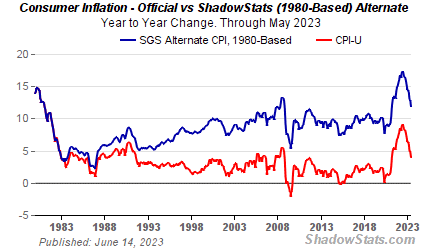 “Official” inflation versus… reality, let’s call it. Shadowstats.com.
“Official” inflation versus… reality, let’s call it. Shadowstats.com.
If the government used the same methodology today as it used back in 1980, we’d see a much higher inflation rate. Instead of the advertised 3.5%, it might be more like 12%. And if you buy a house, rent an apartment, buy a new car, pay insurance premiums, enjoy a top-shelf cut of meat from the grocery store, etc.? Well, you know what I mean. There’s plenty of sticker shock out there awaiting the unwary shopper.
Still, prices for some things are stable, if not declining. Yes, the cost of car insurance is soaring, but the price of gasoline in your car is down at least a bit over the past two years. Crude oil, for example, sells at under $70 per barrel, which is a source of relief at the pump, although you may also have noticed that lower-cost petroleum somehow doesn’t seem to translate into cheaper airline tickets if you travel much and track those eye-popping prices.
Meanwhile, prices for many other goods are falling appreciably. Consider consumer electronics like new laptop computers (one I recently bought at a remarkably low price), large-screen television sets, and more.
However, consider where these electronic devices are made. Those super-duper bargains on American shelves represent hard times in Asia. Cutthroat competition and a general recession have forced companies and workers to scramble for every sliver of business and market share they can find. Many Asian firms sell products below production cost to keep the factories humming and avoid closure issues.
Sure, having cheaper oil and low-cost electronics is nice, but that’s not the be-all and end-all of growing the American economy. So, let’s move closer to home, where in Washington, D.C., the Federal Reserve still hints towards rate cuts.
You likely recall that the Fed cut rates this past September, a widely celebrated event. But then, curiously, long-term rates actually rose across broader markets. Clearly, there’s a disconnect between what the Fed PhDs want to accomplish and what market makers and price discovery players foresee. In other words, many savvy investors believe that inflation is not yet licked.
For many decades, the Fed’s target rate for inflation has been 2%, although it’s difficult to fine-tune such things. Right now, inflation is well over that level, whether you take the government’s 3.5% number or the much higher Shadow Stats calculation. And yet, again, the Fed leans towards cutting rates.
At the other end of the monetary spectrum, central banks worldwide have bought gold in large amounts, certainly over the past two years. Part of this reflects seismic-level geopolitical competition, such as the one we have with fast-rising China, where the government, businesses, and individuals all buy as much gold as they can find in dollars and yuan to pay for it.
Another angle is the global trend towards de-dollarization, based on widespread foreign concerns over U.S. sanctions against governments, companies, banks, and individuals who disagree with Washington policymakers.
The most illustrative element of this point about sanctions is that if the U.S. will sanction even nuclear-armed Russia, what chance do any other countries have? Well, they simply keep their figurative mouths shut, exercise prudent self-interest, and default to buying gold with their dollar surpluses. Hence, despite a strengthening dollar, the yellow metal trades at around $2,650 per ounce.
Trump the Builder
What should we make of Trump’s anticipated and signature policies? In other words, is Trump inflationary? Hey, it’s worth asking the question because, on the one hand, he wants “growth like nobody has ever seen before.” On the other hand, he will crack down hard on illegal labor markets, where much work gets done, and slap tariffs on imports.
Think about what this means. Of course, the U.S. economy needs to grow, although I’d prefer what I call “real growth.” Frankly, the U.S. economy doesn’t need more casinos, lotteries, sports betting, house flipping, stock market churning, and similar activity. There’s nothing very real about that; it’s not the kind of long-term investment that creates legacy assets for the next couple of generations.
But we can also take heart in one of Trump's best features: his past as a builder. During his 40+ years in the real estate industry, he and his companies built over 160 large, complex projects, ranging from massive buildings to high-end luxury projects like golf courses.
All of Trump’s projects required high executive function in terms of creating a vision and mission, organizing teams, bringing the right people together, acquiring land and materials, permitting, financing, and much else. In other words, Trump might actually be able to get things done if he didn’t have 90% of the federal judiciary and Deep State sabotaging his every move.
Again, though, there will be labor problems. For example, about 40% of U.S. agriculture relies on migrant labor, and a similar number supports housing construction, although it is very regional. Meanwhile, the U.S. education system has poorly supported students who want to work in important trades, from welding to electronics assembly. Still, don’t discount people’s pursuit of their self-interest. People will learn how to train and do the work if good jobs appear.
Then we have the tariff issue. Trump’s goal is to incentivize companies to move their overseas production home to the U.S. This is a change in mindset from the past 50 years or so in Washington, where policymakers seem to hate their citizens. But nothing is that easy, certainly not anything that requires complex manufacturing or assembly. Trump’s effort will take many years to unfold on the best timeline.
Plus, we cannot ignore the Grand Canyon of nationaldebt, which hamstrings everything the U.S. government and economy must accomplish. The country’s debt now exceeds $36 trillion and grows at about $1 trillion every five months. Interest alone on that debt is about $1.7 trillion annually and rising. Indeed, it’s all astronomical.
How can Trump and his administration make even a dent in the debt? Perhaps that so-called “DOGE” commission will pull a rabbit out of the hat: the Department of Government Efficiency. Save some billions here, save some billions there. It might begin to add up. Good luck, right?
What You Should Do Now
Trump’s opportunities will unfold in their own time and manner. For now, though, let’s play it safe. Trump or not, the U.S. is still a land of profligate government overspending and ongoing inflation, so you want to protect yourself by owning hard assets.
If you do not yet have at least some of your net worth in gold and silver, it’s time to start, and no, it’s not too late. The price of precious metals has risen in the past year, but as we’ve emphasized many times before, this is more like the start of a major upswing.
Here at Paradigm, we often mention the Hard Assets Alliance for buying precious metals. In the interest of full disclosure, we have a relationship with this group, so we’re biased. Still, it’s a solid, well-run company. Give them a look or consult your own favorite metals dealer.
With that, I’ll end here. Thank you again for subscribing and reading.
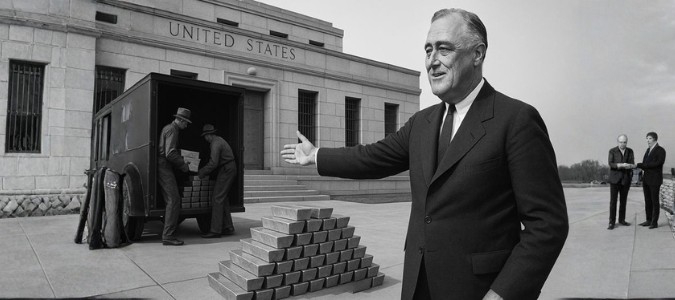
How FDR Put America Behind Golden Bars
Posted December 12, 2025
By Byron King
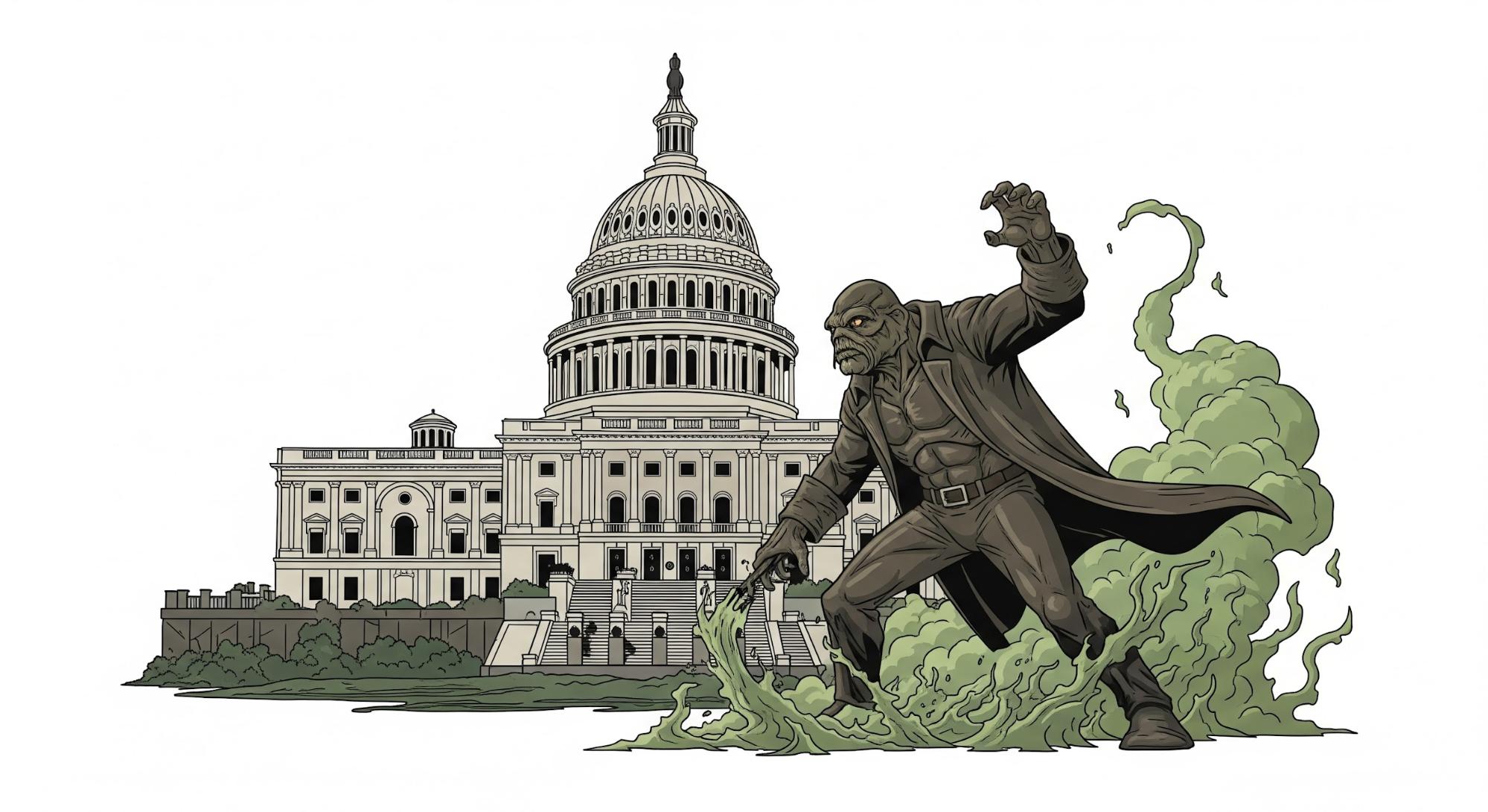
Swamp Thing
Posted December 11, 2025
By Sean Ring
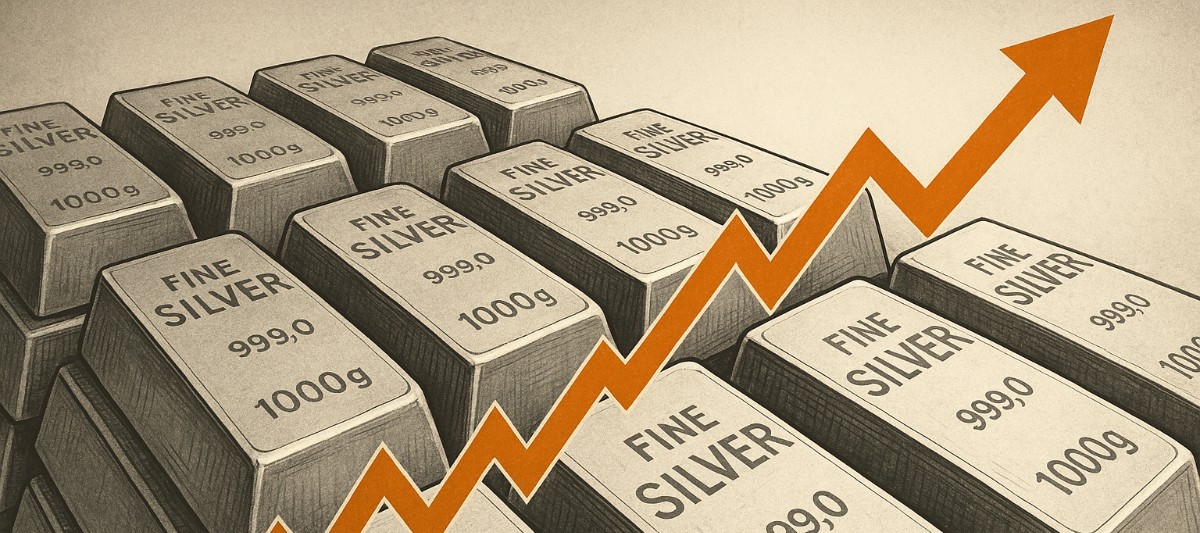
A Sliver of Silver
Posted December 10, 2025
By Sean Ring
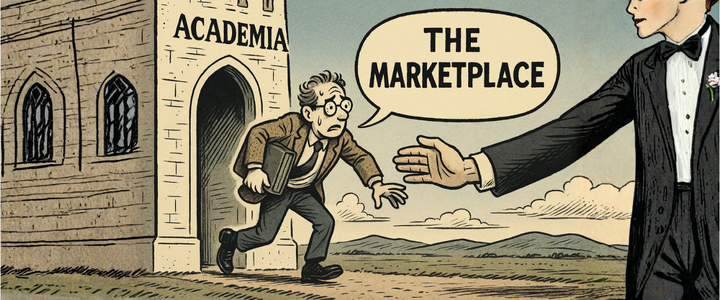
The Public Service of Pushing Brains Into Industry
Posted December 09, 2025
By Sean Ring

Did America Just Lose The Great Game?
Posted December 08, 2025
By Sean Ring

